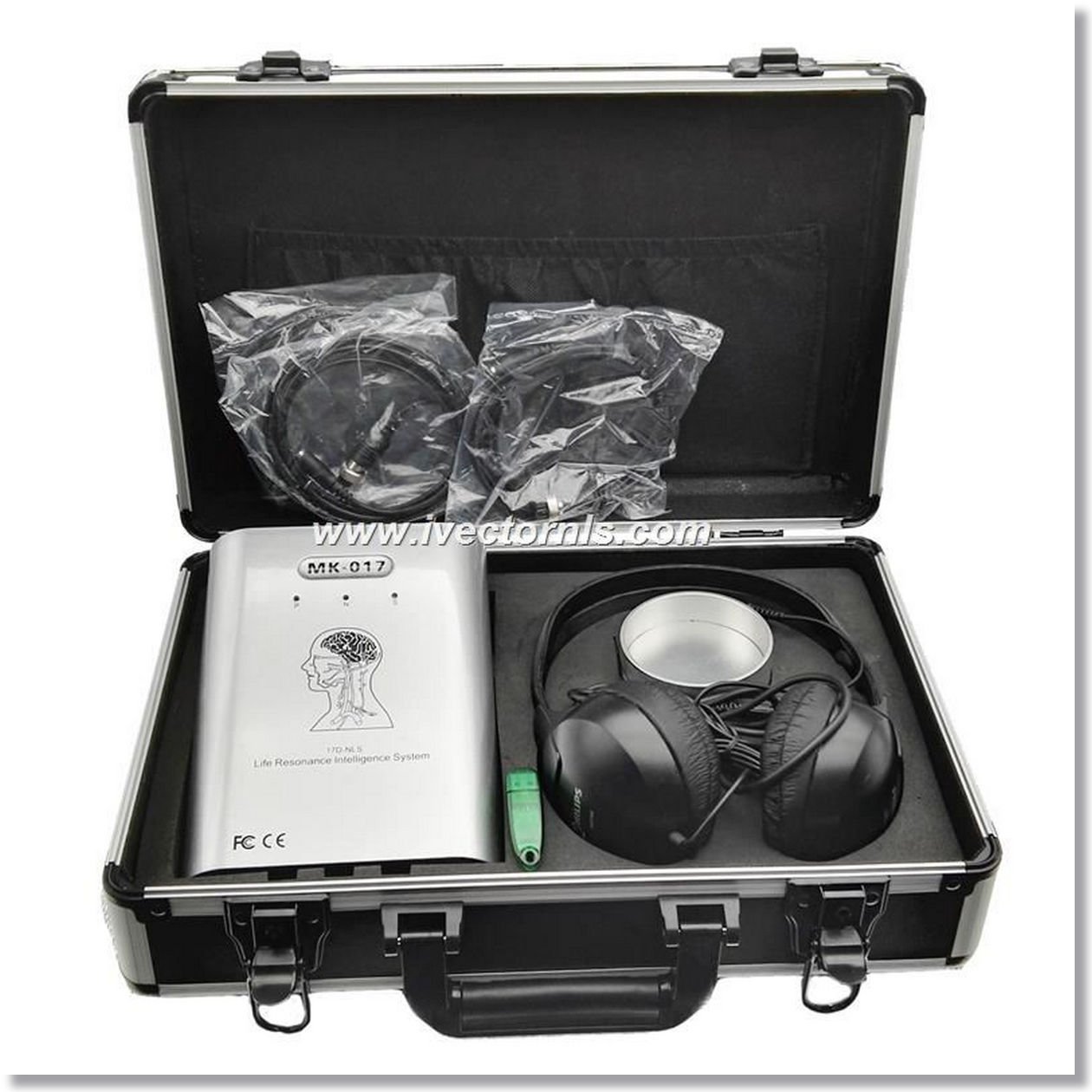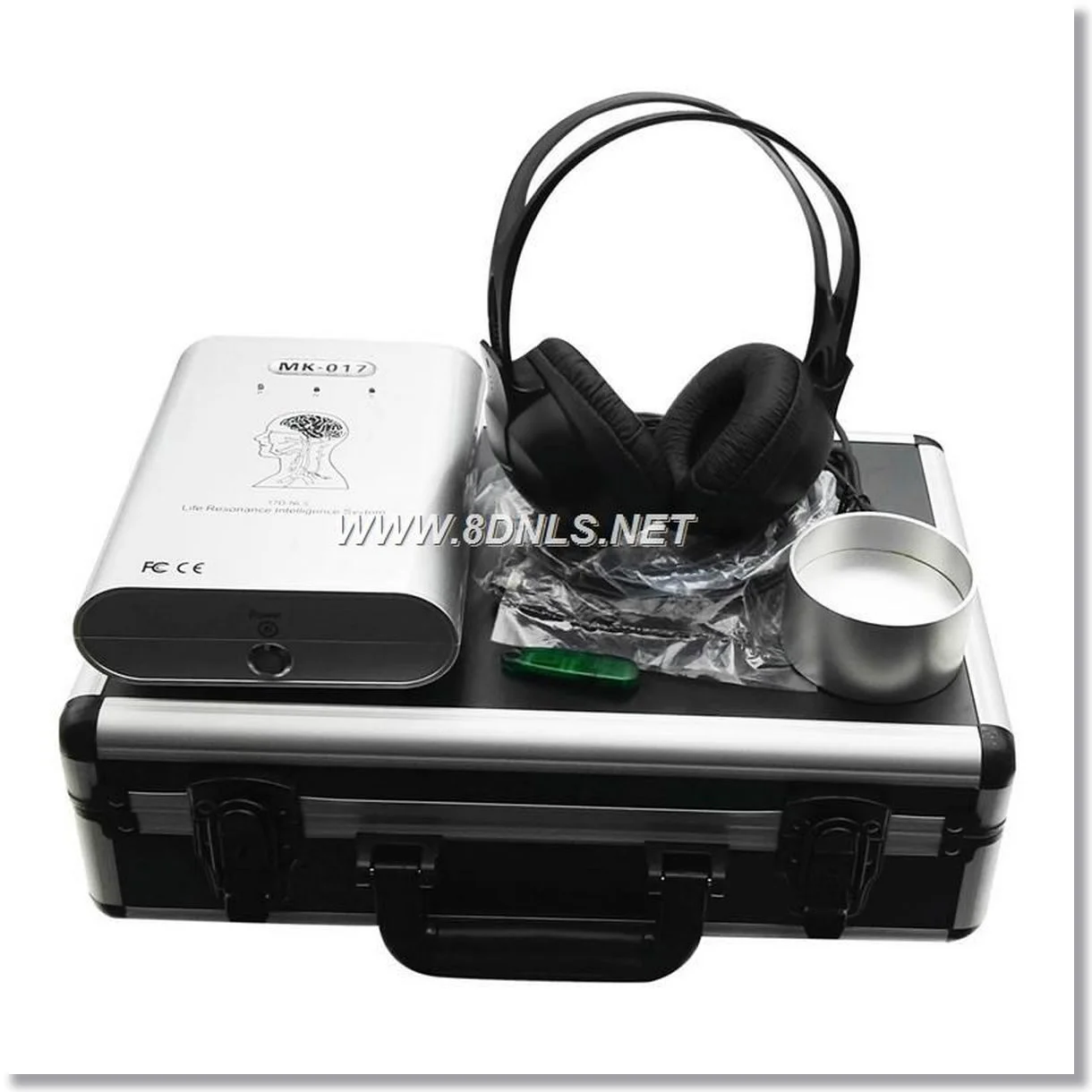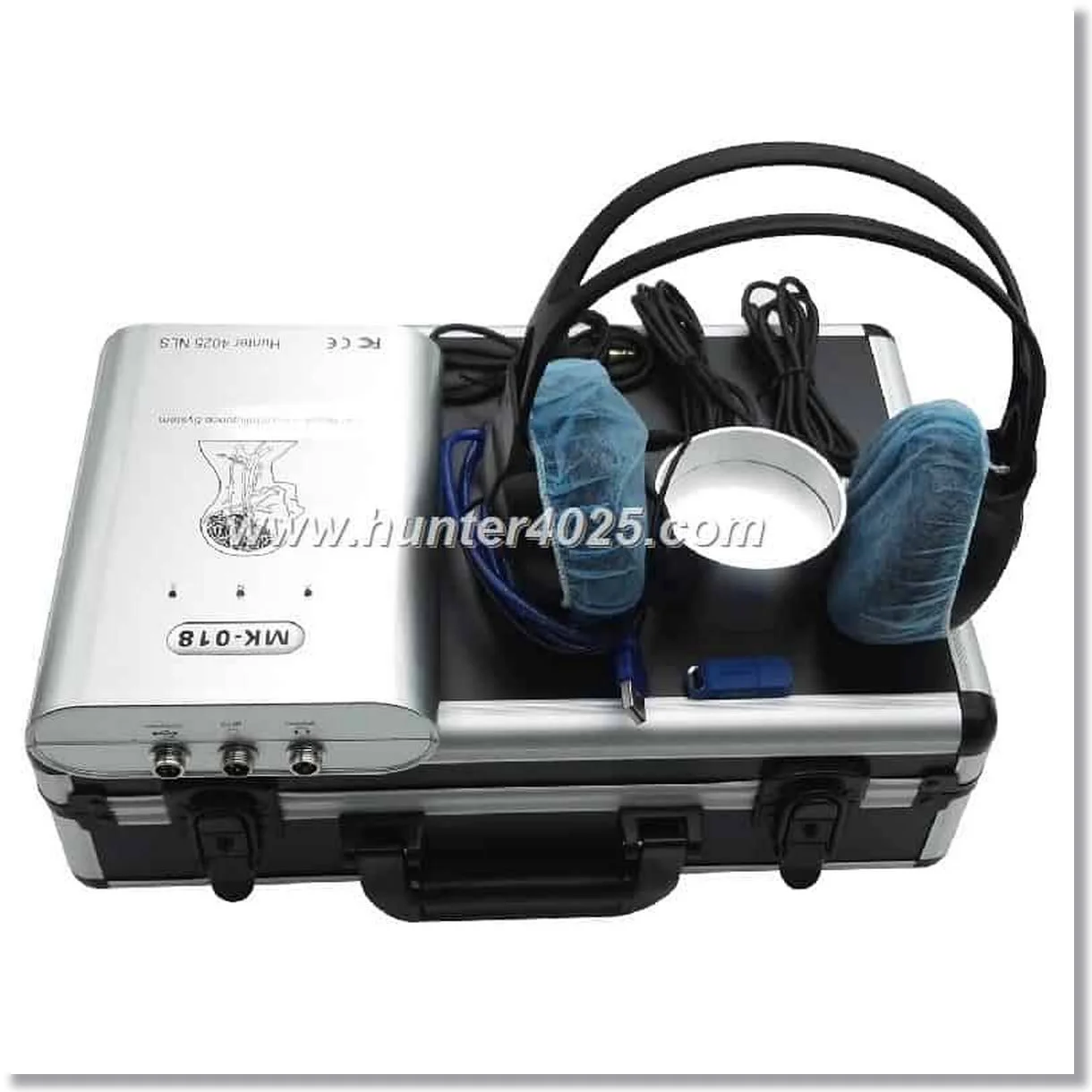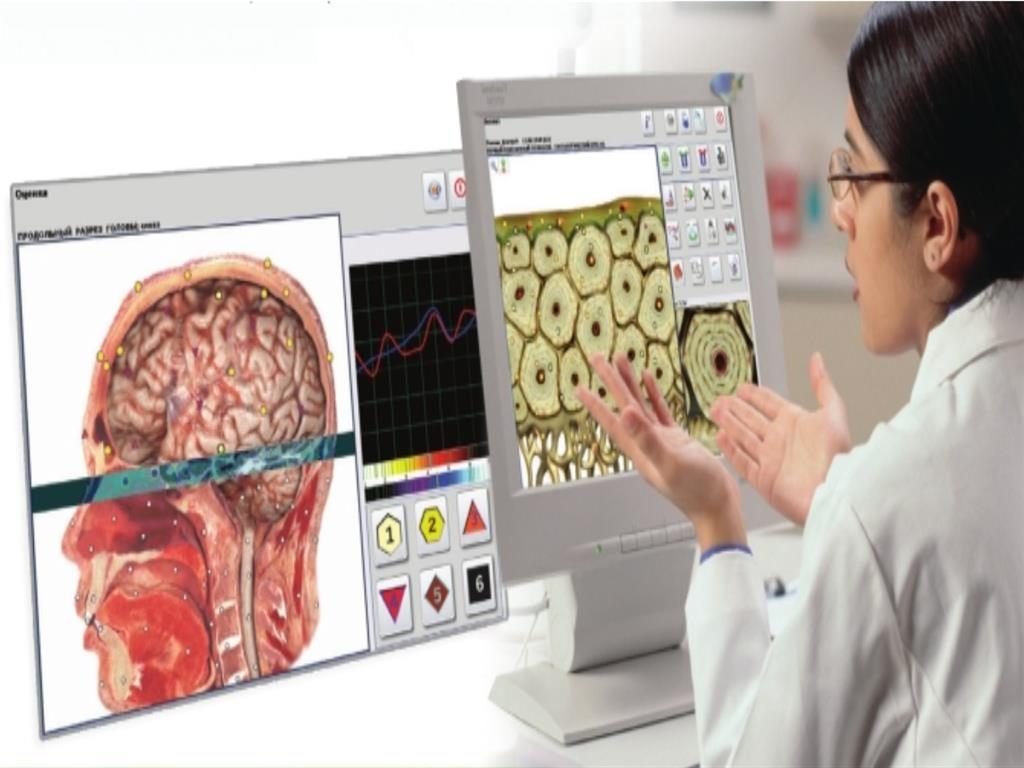vector nls device



What is Computer nonlinear diagnosis? what is NLS?

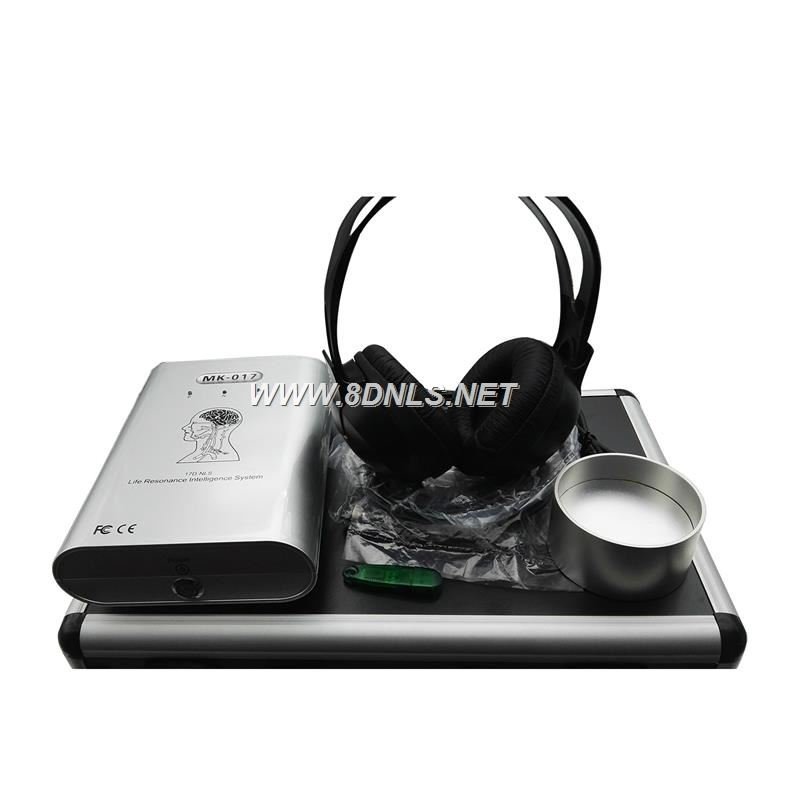

V.I. Nesterov
Nonlinear Diagnosis System (NLS) have been extensively used lately and are gaining ever growing popularity. Even in the few cases where the clinical symptoms look very typical the NLS diagnosis method provides extra information about the extension of affection and enables to judge a prognosis. In most cases it is of vital importance for diagnosis and consequently for the right choice of treatment. In 2000 it had been 20 years since Theodore Van Hoven developed the theory of quantum entropy logic that underlies the method. So nonlinear diagnosis appears to be the newest of all methods, of apparatus diagnostics. At any rate, his discovery became a significant landmark in diagnostic medicine. Nonlinear analysis was originally employed in organic chemistry to determine the composition of complex compounds. The originator of the Vector NLS Device apparatus (Metatron) is acceptably thought to be Sviatoslav Pavlovich Nesterov who introduced a trigger sensor in 1988 and thus framed the conception of the apparatus. Active work was immediately started to develop and improve Vector NLS Device systems. Clinical testing of the early equipment marked a period from 1990 through 1995. In the late 90s there was a fast growth in commercial apparatus production and a sudden leap in the quality of the results produced. The nonlinear diagnosis method is still in its developing stage. The diagnosis techniques are being improved so fast that the system versions have to be updated every six months. Due to the introduction of some new devices equipped with digital trigger sensors the Vector NLS Device has become not only far more time efficient but also quite different in terms of quality. Apparently, some dynamic techniques, for instance three-dimensional visualization of investigation results will soon be introduced into everyday practice. The vegetative testing is just one example of ready adoption. The method is employed so widely that it implies a definite range of indications for its use rather than just its popularization. Research centers go on with their guest for some new investigation methods based on nonlinear analysis systems. The results appear to be quite promising. Unlike NMR and computer tomography, the NLS- analysis does not need high intensity fields. The method seems to have good prospects for metabolism study, particularly on a cell level. The advancement of the NLS-method proceeds along the path not only of technical innovations but also of new applications. Some minor surgical operations, biopsy for one, have been long monitored by ultrasound, fluoroscopy or computer tomography. Today there is an opportunity to have biopsy monitored by NLS. However, many surgeons focus their attention on using this method to perform major surgery. The cost of equipment for NLS- diagnosis is still very low as compared to some other apparatus methods. This is supposed to promote more extensive use of the method in countries with a rather low standard of living. Of all methods of apparatus diagnostics the NLS one provides a representation closed to a pathologic anatomic picture. This circumstance, along with innocuousness, promotes rapid development of the NLS- diagnosis.
Institute of Practical Psychophysics (IPP) – Ascending into the XXI century D.V. Koshelenko, S.A. Letun
The development of a new generation of nonlinear computer scanners (Metatron), which make use of multidimensional virtual imaging of the object under investigation, has enabled to substantially enhance the effectiveness of the NLS-Method and even expand its field of application, despite the competitiveness from MRT. The distinctive feature of multidimensional NLS imaging is an initially volumetric nature of scanning. The data thus received are an integral array, which facilitates the reconstruction of multidimensional virtual images of anatomical structures of the object under investigation. In this connection the virtual NLS is widely used, especially for angiographic investigations with a three-dimensional reconstruction of vascular formations. Another prospective field of application of the three-dimensional image reconstruction based on the data received by means of multidimensional NLS is the study of hollow organs with “virtual NLS-Scopy” involved. This kind of system was developed by Medintech Company for its high-speed multidimensional nonlinear scanners, Z series, and was called Hunter. Hugh resolution maintained during spiral scanning and the use of LAPP system (a system parallel processors with super high computational capability and speed of operation) enable to realize in the project the principle of “virtual NLS-scopy” at Voxel Z multimodal DICOM- compatible work station which is the principal system of imaging and ubsequent data processing with Medintech scanners. NLS images are made ready for visual analysis by means of 4-d Tissue original company-developed method that makes it possible not only to obtain virtual multidimensional icons of anatomical structures but also to single out a specific biological tissue of interest-an extra dimension-and in addition make an imaged bones, soft tissue and vessels at a time. The specific characteristic of the representation of virtual data by the Hunter system is simultaneous of surfaces of cavatus and extramural formations located outside the lumen of the cavity under examination (lymph nodes, vessels). The images that are received form a natural sequence of virtual NLS pictures. So some special navigation programs automatically define the path of motion of the “virtual scanner” by the center of the cavity under examination. The path of motion can be chosen by the operator by means of some other adjustments, which enable to specify the NLS picture in detail by changing of views. A raised representation of the cavity surface is also possible with some deliberate areas of shade involved. The produced sequences of NLS pictures can be easily transformed into a standard VHS video format by means of the epi-Clien program and thus be used in common video systems, specifically in teleradiology. The Hunter system is in the first place designed to reveal patients having obstructive processes in the upper respiratory passages, bulky esophageal, gastric or colonic formations, atherosclerotic lesions o large vessels, and disorders affecting paranasal sinuses, bladder, or spinal canal. The data gathered through “virtual NLS-scopy” enable to pick out in good time the optimum spot for biopsy and find out the extent of the required surgical intervention. This technique can be used both independently and as a useful linking element between tomographic, endoscopic and NLS investigations. The latest development of Medintech Company is Pincers stereo tactic manipulator integrated with a computer scanner, a convenient device for planning interventional procedures under the control of NLS. Pincers comprises a controlled stereo tactic manipulator (“arm”) and a flat gentry-mounted monitor and also a cable system and software. The system provides the physician with means of simulation and performing interventional procedures through interactive linkage between the virtual NLS and the real operational field.


Method of computer nonlinear analysis and its importance for diagnosis
V.D. Artyukh, U.A. Shovkoplyas, A.A. Gavrilov
Computer nonlinear analysis (NLS) as a dynamic noninvasive informative method is being used more and more widely to examine the state of health affected by pathologies of different origin. NLS can be applied both in vivo (to get an NLS-spectrum of one or another part of an organ or tissue) and in vitro (to get an NLS-spectrum of extracts from tissues, biological fluids or cells); anyway, quite frequently both approaches can be combined for more accurate data interpretation. To perform NLS at a clinic one will need devices producing an eddy magnetic field of at least 20-30 mT. The proceedings of the latest International Congresses of medical doctors (in 2000 and 2001) which dealt with new methods of diagnosis are indicative of a growing number of NLS- investigations for the purpose of diagnosing – in 2000 16 investigations were reported to have been carried out while in 2001 there were reported twice as many of them. S.D. Tutin et al. informed about the possibility of using NLS to diagnose abscesses in the encephalon. With an abscess in the encephalon the NLS-spectrum during the biochemical homeostasis evaluation proved to detect signals from lactate and amino acids which disappeared in the course of treatment. The NLS data in vivo correlated well with the results of abscess sample tests made by means of MRC with a high resolution in vitro. Using the NLS-method one can trace the dynamics of metabolic change in the encephalon in treating epilepsy. Some data are available which indicate that it is possible to register a decline in oxidative phosphorylation in the muscles of the lower limbs with constricted vessels caused by arteriosclerosis. In the course of treatment the muscle metabolism appears to improve. Another trend in the application of the NLS- method is its use to detect metabolic disturbance of phosphorergic compounds with muscular atrophy related to pathology in the musculoskeletal system. Some inviting prospects for myocardial infarction diagnosis by means of the NLS-method were described by U.A. Shovkoplyas et al. who studied exchange in the myocardium. With myocardial infarction its level was shown to decrease. The Vector NLS Device method was used to study the dynamics of change in the metabolism of lipids in the liver affected by cirrhosis. The NLS-investigation of the pancreas affected by malignant degeneration enables to diagnose tumor progression, judge of the efficiency of radiation- or chemotherapy and also adjust individual dosage schemes for inoperable patients. Moreover, NLS is reported to be used to diagnose CNS disorders, cardiovascular diseases, muscular system disorders, prostate tumors, mammary gland tumors and in addition to monitor radiation- and medicamentous therapies. The researchers demonstrated the diagnostic importance of NLS for arteriosclerosis, apoplexy, encephalomyelitis and vasculitis. NLS enables to estimate the stage of a pathology and activity of a nidus, determine a relationship between genetic characteristics, clinical symptoms and metabolic deviations in the encephalon. NLS helps to differentiate between benign and malignant tumors in the prostate by means of NLS showed that the method enabled to identify a budding change in the gland tissue and pick out the appropriate therapy in good time. K.A. Kvasov et al. presented some data about diagnosing prostate diseases (histologically confirmed benign hypertrophy and Aden carcinoma among them) by combining NLS and dynamic MRT with artificial “Magnevist” contrasting. According to the results, this kind of combination enables to specify the nature of a prostate pathology and substantially increases the diagnostic accuracy. Special attention has been focused of late on the study of liver metabolism by means of NLS as a result of a growing number of transplantations of the organ (in Europe the annual number of liver transplantations is around 2000 and in the USA it is 10000) and as necessitated by a
noninvasive evaluation of the liver function in the course of implantation. The results indicate that it is expedient to use in these cases the Vector NLS Device as the ATF level in the liver represents an integral picture of cell homeostasis. There is a close correlation between the disturbed metabolisms of phosphorergic compounds and the extent of liver decompensation. Besides being used for diagnosing liver disorders in vivo, NLS makes it possible to judge the state of the transplanted liver in vitro by getting the spectral characteristics of the organ’s metasodes. This is based on a good correlation between the pathological liver metabolism revealed by means of NLS and the disease prognosis. The authors emphasize that NLS enables not only to reveal pathological change in the liver but also to carry out monitoring of biochemical responses to the treatment. Summing up what has been said one can conclude that the expanding use of Vector NLS Device, including its combination with MRT with contrast intensification involved, in different fields of clinical medicine increases the efficiency and the diagnostic accuracy and is indicative of continual progress in the field of internal organ imaging techniques based on the Vector NLS Device phenomenon.

How Vector NLS Device work?
The device works on the principle of amplification of the iniciated signals with the disintegration of metastable structures. By influencing external electromagnetic fields the magnetic moments of the molecular currents in the centers of the cortex nerve cells are loosing their authentic orientation. This causes faulty adjustment of eddy structures of delocalized electrons which lead to formation of unstable metastable states. Disintegration of such state acts as iniciated signal. Expressed physically this device is system of the electronic oscillator which oscillates at appropriate wavelength of electromagnetic radiation. Its energy corresponds to the energy that degrades dominant bonds that maintain structural organization of biological objects in a good condition.The device can cause a bioelectric aktivity of the brain cells so it is possible to selectively amplify signals in the background, which compared to static currents, are hard to detect. Information concerning specific temporal condition of organs and tissues are gathered on the basis of non-contact sensor that was developed using modern information technology and infrasonic circuits. This sensor reveals hardly detectable fluctuation of signals, which are filtered from sound fields and subsequently converted into a digital sequence where they are processed by a microprocessor and, using the interface cable, transferred to a computer.The development of a new generation of nonlinear computer scanners (metatrons), which make use of multidimensional virtual imaging of the object under investigation, has enabled to substantially enhance the effectiveness of the NLS-method and even expand its field of application, despite the competitiveness from MRT. The distinctive feature of multidimensional NLS imaging is an initially volumetric nature of scanning.
The data thus received are an integral array, which facilitates the reconstruction of multidimensional virtual images of anatomical structures of the object under investigation. In this connection the virtual NLS is widely used, especially for angiographic investigations with a three-dimensional reconstruction of vascular formations. Another prospective field of application of the three-dimensional image reconstruction based on the data received by means of multidimensional NLS is the study of hollow organs with Уvirtual NLS-scopyФ involved. This kind of system was developed by Medintech Company for its high-speed multidimensional nonlinear scanners, Z series, and was called Hunter. Hugh resolution maintained during spiral scanning and the use of LAPP system (a system parallel processors with super high computational capability and speed of operation) enable to realize in the project the principle of Уvirtual NLS-scopyФ at Voxel Z multimodal DICOM- compatible work station which is the principal system of imaging and subsequent data processing with Medintech scanners. NLS images are made ready for visual analysis by means of 4-d Tissue original company-developed method that makes it possible not only to obtain virtual multidimensional icons of anatomical structures but also to single out a specific biological tissue of interest-an extra dimension-and in addition make an imaged bones, soft tissue and vessels at a time. The specific characteristic of the representation of virtual data by the Hunter system is simultaneous of surfaces of cavatus and extramural formations located outside the lumen of the cavity under examination (lymph nodes, vessels). The images that are received form a natural sequence of virtual NLS pictures.
So some special navigation programs automatically define the path of motion of the Уvirtual scannerФ by the center of the cavity under examination. The path of motion can be chosen by the operator by means of some other adjustments, which enable to specify the NLS picture in detail by changing of views. A raised representation of the cavity surface is also possible with some deliberate areas of shade involved. The produced sequences of NLS pictures can be easily transformed into a standard VHS video format by means of the epi-Clien program and thus be used in common video systems, specifically in teleradiology. The Hunter system is in the first place designed to reveal patients having obstructive processes in the upper respiratory passages, bulky esophageal, gastric or colonic formations, atherosclerotic lesions o large vessels, and disorders affecting paranasal sinuses, bladder, or spinal canal. The data gathered through Уvirtual NLS-scopyФ enable to pick out in good time the optimum spot for biopsy and find out the extent of the required surgical intervention.
This new model performs all energy diagnostic analysis automatically and completely on its own. All measured data and analysis are evaluated in tables, so you can see and watch the last 4 diagnosis at once. The device is able to compare immediately and to evaluate correctly the measured values of the previous analyzes. Everything can be printed out immediately. While printing, you can also choose adjustment and printing of required parameters. The device allows you to choose manual settings as in the previous systems or semi-automatic settings when energy harmonization. It is able to test suitable food supplements, herbs, foods, allergens, pathogens, etc. Another inovation brings an option to compare the diagnostic of the measured curves, spin energy of organs and energy map of organs. The device was also supplemented with further testing for pathogens, list of another 25 companies dealing with dietary supplements and testing for suitable foods for a particular client. Another new feature is the automatic quantum harmonization. The programming software is regularly improved. Once you connect to the Internet and the program runs on the computer, a new current database of other allergens, pathogens, nutritional supplements, homeopathic remedies and other software upgrade is downloaded. If you have a problem with the software, we will quickly resolve it using a remote connection to your computer.
Each Vector NLS Device is calibrated with a computer processor to work as precisely as possible. It can be set to normal or higher sensitivity. A computer with installed software should be used only for diagnostic and notes. Installing additional software and downloading can recalibrate the device and partly influence the evaluation of recorded samples. Therefore we recommend to use the computer only for diagnostics and energy health analysis. We also provide remote maintenance of your computer, so you do not necessarily need to drive tens or hundreds of kilometers in order to fix any error or blockage of the program.

How to analysis the test reports by the 6 colors?
1 – Normal State
2 – Standard Condition
3 – Restricted State
4 – Serious Disorders State
5 – Weak State
6 – Abnormal Condition
(Sub-health status)
Vector NLS Device 5 advantage
1)ABSOLUTELY SAFE AND USER FRIENDLY,The Metatron NLS Rough Diagnostic device will not cause any harm or discomfort to the patient’s health.ABSOLUTELY SAFE AND USER FRIENDLY,The Metatron NLS Rough Diagnostic device will not cause any harm or discomfort to the patient’s health.
2)Non-Invasive
3)Free of Radiation
4)No Internal Probing
5)No need for medical tests*

What is Vector NLS Device 3 Features?
Body detection
12 large-scale system can detect the body, including the 1000 organs, gladns, and some cells to make predictions report, systemic accuracy 100000 collection points to ensure detection. Users can saw their own organs in the present, past, and future health of 3-5 years and vitality trends tissue cells.
Drug analysis and comparison
can analyze medicines,health products on the human body organ effect or whether there is damage, and thus the state of life balance for mediation.
Repair function improved
Energy spectrum of repair and restoration function, you can specify repair parts, auto body repair can be, or the early stages of the disease has not yet formed, especially sore point for repair has good secondary effects.
What Vector NLS Device Applications?
Business Organizations-supermarket, large-scale shopping malls, exclusive agency, chain shops, large-scale sales, star-rated hotels, restaurants, travel agencies, pharmacy.
Financial Organizations-Banks, negotiable securities, funds, insurance companies, pawnshops;
Non-profit Organizations: Telecommunications, post offices, hospital, schools;
Public Places-subway, airports, stations, gas stations, toll stations, bookstores, parks, exhibition halls, stadiums, museums, convention centers, ticket agencies, HR market, lottery centers; Real Estate Property: Apartments, villas, offices, commercial buildings, model rooms, property brokers;
Entertainments-Movie theaters, fitness halls, country clubs, clubs, massage rooms, bars, cafes, Internet bars, beauty shops, golf course


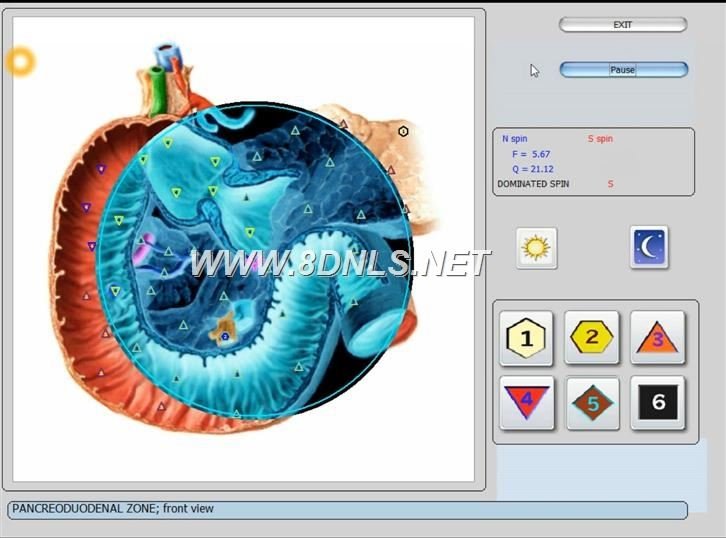


We are offer Top brand Newest Vector NLS Device manufacturer,We can offer OEM Vector NLS Device and software services.We can delivery to worldwide ,iF You need the Vector NLS Device best factory price.Contact now!



Sale Cousultant : Mrs Lucy | Sale Consultant : Mr Mark |



